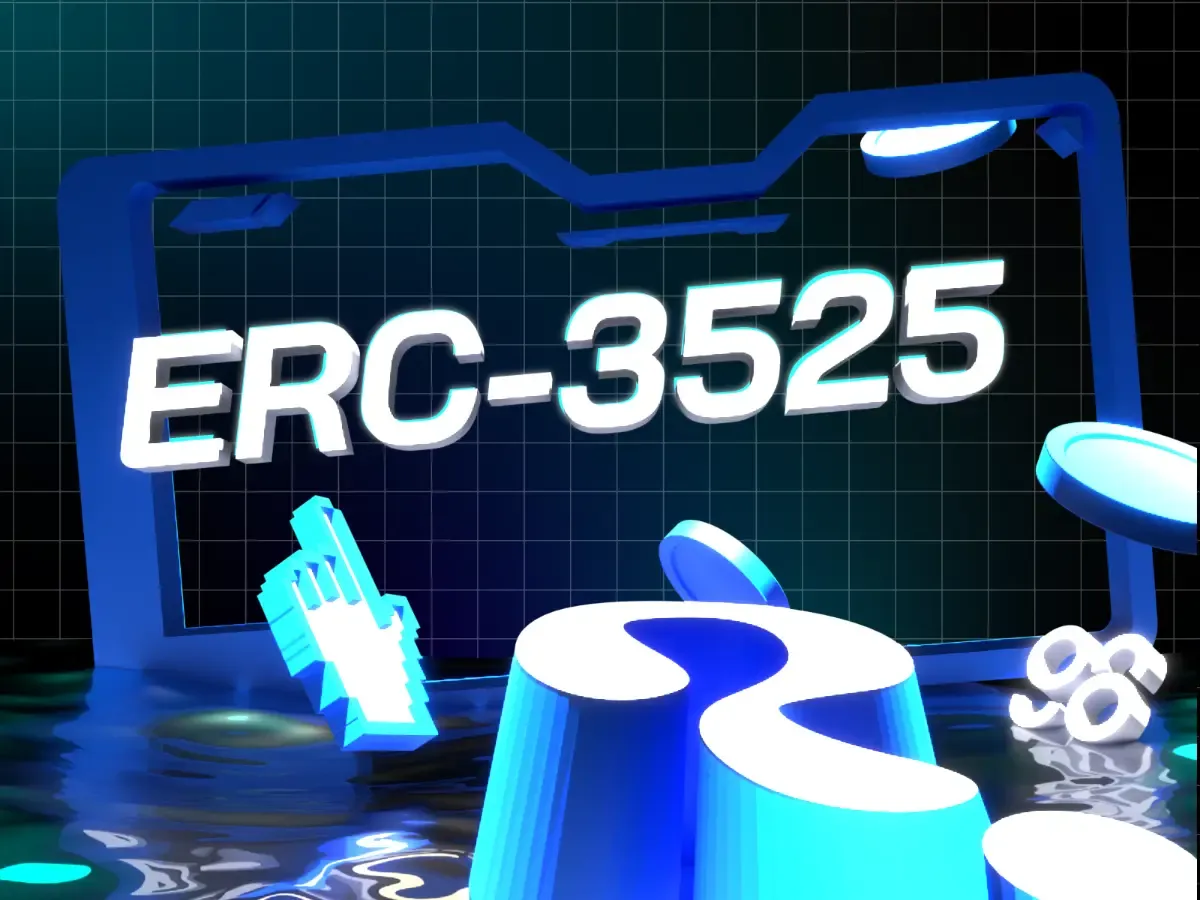What is ERC-3525? The Semi-Fungible Token Standard in blockchain

Financial NFTs, which are now on track to become the most frequently used NFT application, cover everything from insurance and bonds to custom tokens and tokenized real-world assets that follow the ERC-721 and ERC-3525 token standards at their core.
What is ERC-3525?
ERC-3525 is a Semi-Fungible token standard that was designed by Ryan Chow and members of the Solv Protocol. It is an NFT's scalability token standard, in which each token is unique and exclusive, and they can be split, merged, and traded.
Before it, the ERC-3525 tokens could be used in a variety of financial models, such as those that used the ERC-20 token standard as underlying assets. Furthermore, for fractionalization purposes, these tokens can employ the ERC-721 token standard. In other words, this can be seen as taking tokenization to newer heights.
What are Semi-Fungible tokens?
Semi-Fungible tokens are a new type of token that combines the features of both fungible and non-fungible tokens. In which, the divisibility of ERC-20 tokens is mixed with the information description capabilities of ERC-721, leading to implementations that will revolutionize DeFi.
For example, a token representing a valid $100 Amazon coupon would be interchangeable with another token representing the same voucher with the same expiration date.
The feature that distinguishes these unique forms of tokens as "semi-fungible" is that they lose their face value once they've been redeemed. That process of transforming from a fungible to a non-fungible token upon redemption is where semi-fungible tokens get their name.
How do ERC3525 tokens work with the Semi-Fungible tokens?
The ERC-20 and ERC-721 standards, despite their widespread use, have some drawbacks. ERC-3525 was created to address the shortcomings of these token standards.
ERC-20 tokens require a separate ERC-20 contract for any new value or any combination of attributes added, which significantly increases the number of ERC-20 contracts needed indeed.
ERC-721 tokens are more adaptable than ERC-20 tokens since they have more custom extensions; nevertheless, NFTs do not have a quantifiable (split) function, which dramatically lowers manageability and liquidity.
For example, if you want to farm a portion of your LP position, you'll have to remove liquidity from the pool added before, then create a new one. This process is inconvenient, causing the temporary liquidity problem for the protocol.
To address the ERC-721's liquidity issue, ERC-3525 proposes an obvious solution: adding a quantification feature directly to the ERC-721 token.
When compared to ERC-721, this allows ERC-3525 to inherit the capacity to customize properties while also increasing convenience. Furthermore, ERC-721 compatibility will make it easier for this new token standard to use current infrastructure and be deployed, making it more useful across protocols.
Each ERC-3525 token contains an ID property to identify itself as a unique entity. The ERC-3525 standard, as an extension of ERC-721, transforms the ERC-721 token's data format from "tokenID" to "tokenID-slot-units," allowing token sharding.
ERC-3525's "tokenID" symbolizes property ownership in the same way that ERC-721's "tokenID" does. The distinction is that ERC-3525 contains two extra parameters: "units" for amount (equivalent to ERC-20's "balance") and "slot" for token characteristics classification.
A token can then be divided into several tokens, each of which has the same number of "units" as the original one. Split tokens with the same "slot" value can be united, with the resulting token's "units" equaling the combined "units" of all merged tokens.
To summarize, ERC-3525 offers a Semi-fungible Token solution, in which tokens with the same "slot" value become fungible tokens, while tokens with different "slot" values become non-fungible tokens. This overcomes the problem of the ERC-20's inability to carry a lot of data and the ERC-721's lack of liquidity.
ERC-3525 Tokens use cases in Blockchain
Solv Protocol
Solv Protocol, a major innovation on Financial NFT, was the first protocol to employ ERC-3525.
Solv Protocol uses the ERC-3525 standard in IVOs (Initial Voucher Offerings), which is a type of project token distribution to the community via Vouchers. The SOLV token sale, which was conducted on both Binance NFT and Solv Marketplace on December 13, 2021, was the first IVO to be held.
IVO projects create ERC-3525 tokens, which they subsequently list on marketplaces such as Solv's IVO Market and Binance NFT.
Solv Protocol vouchers are financial NFTs that may be utilized with ERC-3525 capabilities such as split and merge after tokens have been added to the voucher.
If two or more vouchers have the following properties in common, they can be combined and traded:
- Same type of lock-up.
- Same lock-up period.
- Same token.
Advantages of ERC3525 vouchers
- Instead of developing extra tokens for the projects it manages, Solv Protocol generates vouchers to assist users in managing money allocation. In addition, the on-chain OTC market, allocation, trading, and lending of other derivatives will be executed more easily.
- Second, companies can offer vesting vouchers (IVO) to investors while raising cash for public rounds, effectively creating a type of community fundraising.
- As the cost of developing a community for new projects is extremely high, vesting vouchers is a good way to save money for things like incentives, airdrops, and liquidity mining.
The benefits of Solv are the revolution in minting, allocation management, and NFT transactions in the form of ERC-3525 vouchers. They use the NFT to give liquidity to any asset classes, and many other types of financial NFTs may follow.
In addition to being used to raise funds via Voucher, the ERC-3525 allows many future possibilities in the DeFi market, such as DeFi bonds, structured financial products, and so on.
Conclusion
This article has provided a comprehensive overview of what ERC-3525 is, as well as some prominent use cases for this topic! If you find it useful, please share it with your friends!
Learn more: ERC-4626 - The new Yield-bearing token standard